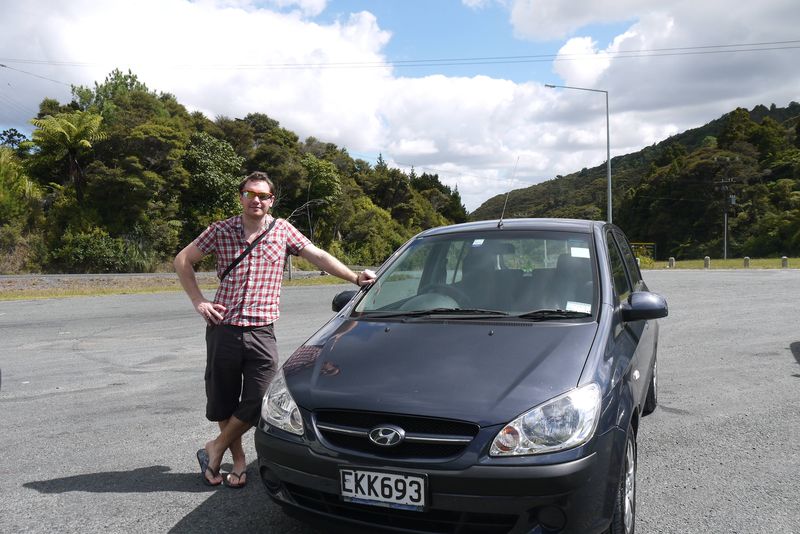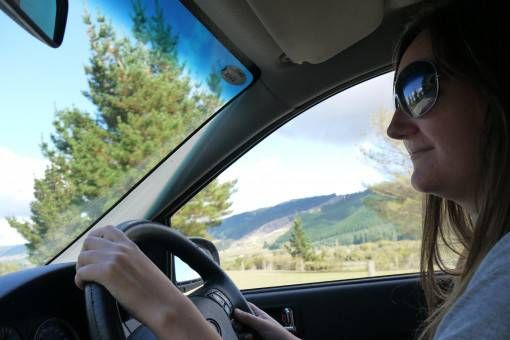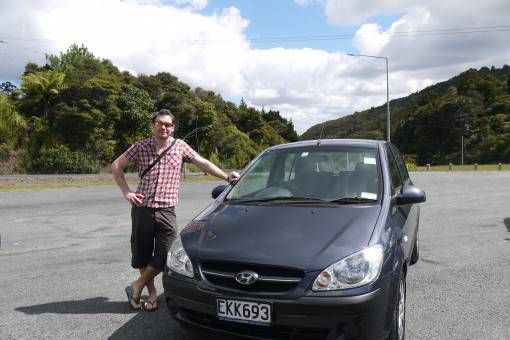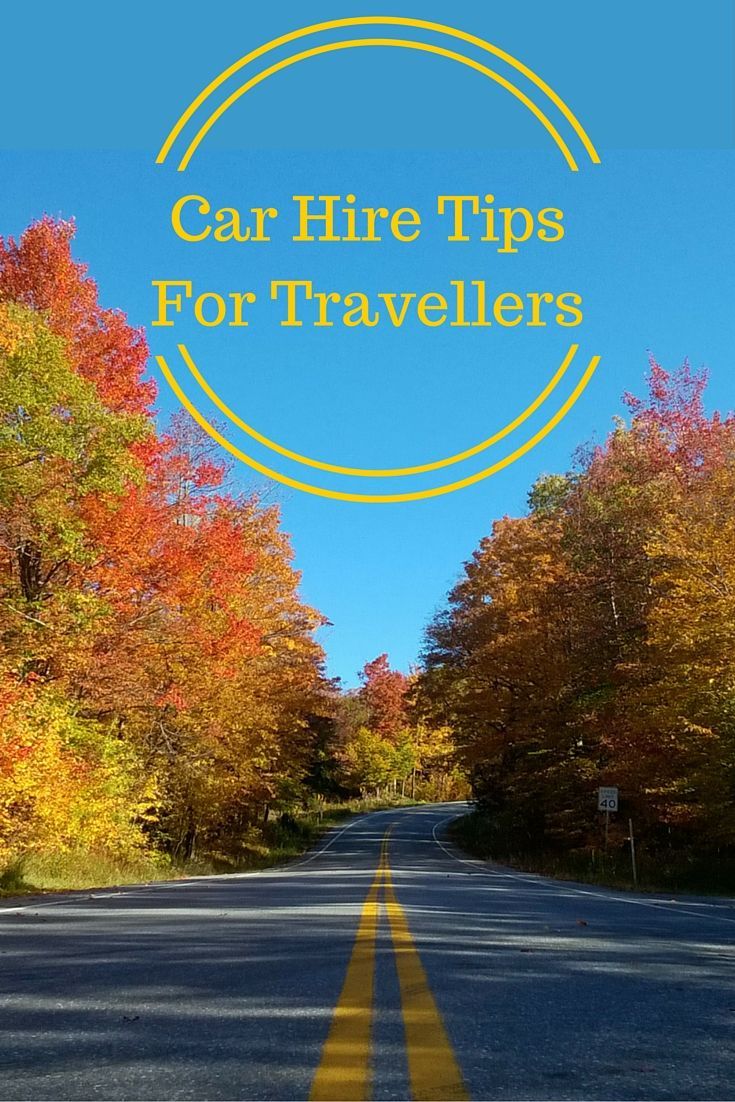
18 Jul Car Hire Tips for Travellers
Thinking of renting a car for your travel adventure? We’ve had great experiences with hire cars so far on our trip; we spent a month exploring New Zealand and also took road trips along the East Coast of Australia and the Great Ocean Road in our very own rental car. Here’s why we recommend travelling by car and some top tips on how to make renting a car as hassle-free and cost-effective as possible.

We drove around 2,200 miles during our month in New Zealand
Why Travel by Rental Car?
Although it’s cheaper and safer to use public transport now we’re travelling in Asia, we definitely think hiring a car is the best solution for getting around in more developed countries such as the USA, New Zealand, the UK and Australia. Here’s why we love travelling by rental car:
Freedom – we love being able to hop in our own car and go wherever we like, when we like. During our road trips in New Zealand and Australia we enjoyed the freedom of being able to spontaneously stop off at interesting places, move on to new destinations early, change our itinerary at the last minute or simply pull over along the way for a picnic.
Comfort – we prefer the comfort and space of our own car over cramped, noisy buses and trains. We like to stick the air-con or heating on as we need it, tune the radio to a station we like and chat away in private while we watch the scenery pass us by.
Cost – while public transport is often dirt cheap in Asia it can be pretty expensive in more developed countries, so a hire car can actually save you cash in the long-run. When we totalled up the cost of catching either a train or bus down the East Coast of Australia, for example, it worked out only marginally cheaper than hiring a car. Considering we’d then need to pay for extra transport to our hostels and attractions we would have actually spent more had we caught the bus or train down the coast rather than hired a car.
Convenience – hiring a car is just so convenient; all you need to do is throw your stuff in the boot, check the map or programme your Sat-Nav and drive straight to your next destination. It’s also great to be able to park right outside tourist attractions or your hotel.
Our USA Car Rental Plans
We’ve had grand plans to travel through Canada, the USA and South America for a while now and will hopefully be ready to take on this trip in 2015. Given the size of the country, we can’t think of any better way to explore America than by car so we’ll be arranging car hire in the USA for our trip. Lately we’ve been particularly inspired by fellow travel blogger Patti’s tales of her road trip along iconic Route 66 and we hope to make this very journey ourselves when we visit.

Andrew with our rental car in New Zealand
Car Hire Tips for Travellers
Here are some tips we’ve picked up on how to make the experience of renting a car as easy and cost-effective as possible:
Research car hire companies – do some research online to find a reputable car rental company in the country you’re visiting. Look at online reviews and contact the company if you have any questions about the service they provide.
Determine your pick-up and drop-off points – make sure your car hire company allows you to pick-up and drop-off the vehicle in the right areas according to your travel itinerary. In New Zealand, for example, we were able to pick up our car on arrival at Auckland airport and drop it off the day we left at Christchurch airport.
Save money by booking online – it’s often cheaper to book a hire car online rather than in-branch, so compare car hire deals on the internet before you travel – we saved £100 in Australia by doing this.
Choose your car carefully – find a car that suits your needs. Think about how big it needs to be, how much power you require and whether you want a manual or automatic vehicle. You might also need extras such as a baby seat or a Sat-Nav system, which can add to the cost of your hire car. Also think about whether you need to add more than one driver to the car rental agreement as this can bump up costs; we paid an additional £1 a day so that we could both drive in New Zealand.
Don’t underestimate fuel prices – the initial cost of hiring a car can seem quite cheap but don’t forget to factor in fuel and toll costs too. Research the cost of fuel in the country you’re visiting before you travel to get an idea of how much you’ll need to spend.
Check legalities – as well as carrying your driver’s licence, find out whether you need an International Driver’s Permit to drive in the country you’re visiting; we needed one to cover us for driving in parts of Australia. Countries have different age restrictions for car rental too, so research this when you’re planning your trip.
Organise rental car insurance – most car hire companies will offer insurance policies and break-down cover but be sure to check the small print before you buy. Often, the excess fees can be expensive, as can the collision damage waiver policies they offer to cover these fees. We managed to find a cheaper car insurance deal online and saved around £200 when we rented a car in Australia. Whichever insurance option you go for, make sure you read and understand all the terms and conditions as there may be some clauses that affect your trip; for instance, in New Zealand our car insurance policy stated that we couldn’t drive on unsealed roads.
Check whether you need a credit card – most car rental companies will ask that you provide them with credit card details as security when you hire a car. This was a problem for us as we didn’t have credit cards and needed to take one out to be able to hire a car in New Zealand.
Ask about the mileage policy – some car rental agreements will limit you to driving a certain amount of miles per day and charge extra if you go over this. We make sure that we have unlimited mileage policies so that we don’t incur extra costs and can cover as much ground as we like in a day.
Filling the tank – your car hire company will likely give you the option of refilling the car with fuel before you return it or paying a predetermined amount for the company to fill the car for you; choose which option is best for you.
Check the car for damage – before you drive away make sure you check over the car and sign a damage inventory listing all vehicle defects, inside and out, no matter how small. Take pictures and video of any existing defects as proof that you weren’t to blame for the damage.
Keep a copy of the contract – make sure you carry a copy of the car rental agreement, your insurance policy and break-down cover details with you while you travel.
Know the road rules – each country has different driving and road rules, familiarise yourself with these before you travel, paying particular attention to speed limits to avoid breaking the law.

Pin Me!





Patti
Posted at 00:27h, 19 SeptemberGreat tips and thanks for the shout out! I hope you do get to drive Route 66, it’s a wonderful experience. We didn’t have enough time, only 9 days on the road. I would encourage allowing at least 2 weeks in order to do it justice and be sure to use the guidebook I talk about – otherwise you’ll miss too much.
Amy
Posted at 05:46h, 19 SeptemberNo worries Patti, we’ve been loving your Route 66 tales. We’ll check out that guidebook and perhaps come back to you with some questions just before we take on the road in 2015!
Gokhan Degirmenci
Posted at 12:38h, 20 JuneI think you are talking about the refundable deposit. Every rental company will take this, irrespective of whether you have a car rental excess policy. The way an excess policy works is that if there were any accidents and the excess is charged by the car rental company to you. You then claim that back from your insurance policy.
I hope that this explains it for you.
Kind regards
Andrew
Posted at 15:23h, 20 JuneYes Gokhan, we have an excess reimbursement policy, meaning that if the car hire company actually charges us the excess amount for any reason (at the beginning of your rental they will only put a ‘hold’ or ‘block’ on your credit card, not actually deduct/take any money from you unless they need to due to damages) then we can claim that excess back from our insurance company.
What we are saying is that car hire companies typically offer a zero excess policy, but at elevated prices compared to the excess reimbursement policies you can find online.
Thanks for your comment.
precious leyva
Posted at 20:39h, 09 SeptemberI’ve been thinking about hiring a car service when I go to the airport, but I am not sure how to go about it. It didn’t even cross my mind that I should determine a pick up and drop off location. It would be important when I come back from my trip, that my car service knows where to find me! Thanks for the idea.
Amy
Posted at 16:37h, 10 SeptemberNo worries, thanks for reading.
Pat Hemphill
Posted at 21:04h, 25 NovemberMany eons ago I travelled to the USA with my husband and two young kids. Apart from getting used to driving on the right-hand side of the road, there were rules of the road I was completely unaware of. A pretty serious one was….I was driving behind a yellow school bus, which stopped to let kids get off, while two large red lights were flashing on the back of the bus. Thinking nothing of it, I saw the way was clear and began to overtake the bus….well, every car around started hooting at me!!
Rule to remember in the USA : NEVER overtake a stationary school bus that is discharging passengers and even more importantly, when approaching a school bus from the opposite direction (from the front)…if the bus stops, you need to screech to a halt too, to allow the school kids to cross the road in front of you, safely! The bus will activate those large red lights, back and front, before stopping to let you know you need to reduce speed and stop.
For me, this rule should be handed to all visitors entering the US, as like me, ignorance could have caused serious injury to a child. Please check if this rule is still in place today.
Amy
Posted at 12:24h, 26 NovemberHi Pat, wow, thanks for sharing your story. Just goes to show how important it is to check out local road rules when you drive abroad. We’ve experienced a lot of differences while driving around Europe at the moment too.